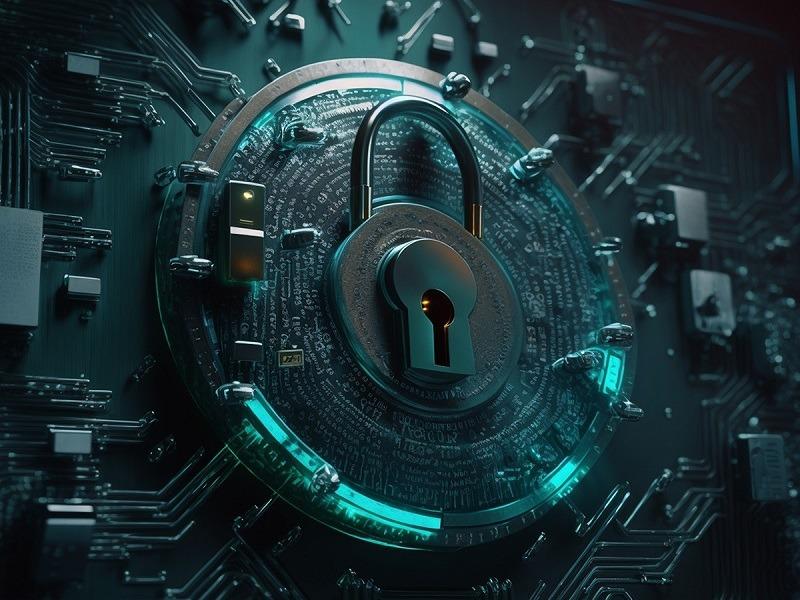Cybersecurity has never been more critical in today’s digital landscape. With the increasing availability of information via digital networks, safeguarding sensitive data and shielding essential systems from online risks takes on a paramount role.

Cybersecurity measures, also known as information technology (IT) security, are indispensable in addressing organizations’ constantly evolving threats. From monitoring network security to fortifying critical systems, cybersecurity encompasses various applications crucial for preserving the safety and integrity of data and systems.
What is Cybersecurity?
Cybersecurity safeguards computer systems, networks, software, and data from potential threats, unauthorized access, and malicious attacks. It involves using various technologies, processes, and measures to prevent cybercrimes like hackers, data breaches, malware, and ransomware from harming digital assets.
The software is essential for safeguarding the privacy and security of businesses and individuals, taking a proactive approach to defending networks, systems, and applications against cyber-attacks. Its primary purpose is to prevent unauthorized data access, thwart cyber-attacks, and mitigate identity theft risks.
Below, we explore the trending cybersecurity applications of 2023. But before delving into the crucial trends, let’s first gain a clear understanding of cybersecurity.
Essential Applications of Cybersecurity in 2023
Network Security Surveillance
Continuous network monitoring is an essential application of cybersecurity. By actively looking for indications of harmful or intrusive behavior, organizations can detect and respond to potential threats promptly. Network security surveillance is often used with other security tools such as firewalls, antivirus software, and intrusion detection systems (IDS). Whether done manually or automatically using specialized software, network security surveillance helps organizations identify and mitigate potential network vulnerabilities.
Identification and Access Control (IAM)
Identity and Access Management (IAM) is another critical cybersecurity application. IAM allows organizations to control and regulate access to their data, networks, and computer systems. Organizations can ensure that only authorized individuals can access sensitive information by implementing robust authentication and access control mechanisms. IAM solutions often utilize role-based access control (RBAC) to limit access to specific system components based on user roles and responsibilities. This helps prevent unauthorized access and reduces the risk of data breaches.
Software Security
In today’s digital landscape, software security is paramount. Organizations rely on various software applications for their day-to-day operations, and securing these applications is essential to protect against cyber threats. Application security involves implementing measures such as code signing, application whitelisting, and secure coding practices to ensure the integrity and confidentiality of software. Additionally, the application of artificial intelligence (AI) in cybersecurity is expected to further enhance software security by identifying and mitigating software flaws and vulnerabilities.
Risk Management
Risk management is a crucial aspect of cybersecurity. It involves assessing and mitigating potential data and systems risks and implementing measures to ensure sensitive information’s confidentiality, integrity, and availability. Risk management encompasses risk analysis, data integrity, security awareness training, and protecting sensitive information. By identifying potential risks and implementing appropriate controls, organizations can minimize the impact of cyber threats and protect their valuable assets.
Disaster Recovery and Business Continuity Planning
Disaster recovery and business continuity planning are essential cybersecurity applications. These processes involve developing strategies and procedures to ensure the continuity of business operations in the event of a data loss, cyber-attack, or natural disaster. By regularly backing up data and investing in robust infrastructure, organizations can recover quickly from incidents and minimize downtime. Disaster recovery and business continuity planning help organizations maintain operations and protect critical systems and data.
Physical Security
While cybersecurity often focuses on digital threats, physical security is equally important. Physical security measures, such as access controls, surveillance systems, and intrusion detection systems, help protect an organization’s IT infrastructure from physical attacks and unauthorized access. By implementing robust physical security measures, organizations can safeguard their servers, data centers, and other critical assets from physical threats.
Compliance and Investigations
Cybersecurity is crucial in ensuring compliance with regulations and conducting effective investigations. Compliance with industry-specific regulations and standards is vital to protect sensitive information and maintain the trust of customers and stakeholders. Cybersecurity also aids in investigations by providing valuable insights and evidence in cases of suspicious activities or cybercrimes. By adhering to regulations and conducting thorough investigations, organizations can mitigate risks and ensure the security of their operations.
Security During Software Development
Ensuring security during software development is essential to prevent vulnerabilities and weaknesses that hackers could exploit. Cybersecurity tools and practices are used to thoroughly test, scan, and analyze software to identify and address any potential security flaws. By following secure coding practices and industry standards, organizations can build secure software and protect against potential cyber threats.
Security Against DDoS Attacks
Distributed Denial of Service (DDoS) attacks can disrupt an organization’s online services by overwhelming its network infrastructure with malicious traffic. Cybersecurity measures can help organizations mitigate the impact of DDoS attacks by redirecting traffic to cloud-based servers, implementing traffic filtering mechanisms, and utilizing intrusion prevention systems. By proactively defending against DDoS attacks, organizations can ensure the availability and accessibility of their online services.
Protecting Critical Systems
Protecting critical systems is a top priority for organizations. Cybersecurity measures help prevent attacks on large servers connected to wide-area networks and ensure industry-standard security practices are followed. Real-time monitoring, routine security evaluations, and user awareness training are crucial to maintaining the security of critical systems. By implementing strong security measures and continuously evaluating and updating their systems, organizations can safeguard their critical infrastructure and protect against cyber threats.
Conclusion
Implementing robust cybersecurity measures provides organizations with a multitude of benefits. It safeguards the company’s reputation by effectively preventing data breaches and maintaining the trust of customers. Additionally, it protects personal information from unauthorized access and misuse. It is crucial for organizations to stay updated with the latest cybersecurity trends and continually adapt their security strategies to address emerging threats. Contact us today to learn more about how Sisar can help enhance your organization’s cybersecurity!






